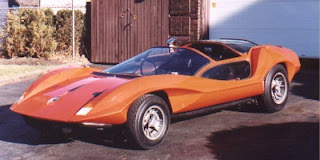Some of you may be familiar with the
film 'A Clockwork Orange', made in 1971 by Stanley Kubrick and based
on the novella by Anthony Burgess. In the UK this has a degree of
notoriety, mostly coming from the mistaken belief that the film was
so violent that it was banned from being shown.
Although the film is very violent, it
was never actually banned, rather Kubrick chose to withdraw the film
following threats to him and his wife following lurid newspaper
reports and real crimes alleged to have been 'inspired by the film'.
It continued to be shown in other countries, and I saw a subtitled
version of it during a trip to France in the 80s.
Following Kubrick's death in 1999, the
film became available on DVD in the UK, and had a theatrical
re-release in 2000.
A few months ago, what should I find
in the 'bargain bin' in my local Morrison's supermarket, but a copy
of the DVD for 4 or 5 pounds. It was interesting viewing as a bit of
a period piece – being made in 1971, it's set in the 'near future'
– so looks like 1971 but with slight 'twists' of fashion and style.
There's scene set in a record shop where contemporary records are on
sale, including Pink Floyd's 'Atom Heart Mother', which was
originally planned to provide the film's soundtrack. The soundtrack
used is a mixture of classical pieces and specially composed works
for the synthesizer written by Wendy (then Walter) Carlos. I believe
this was the first film to use a synthesizer soundtrack.
Getting to the point of this post –
in one scene in the film, the main characters steal a car (referred
to as the 'Durango 95'), and drive at high speed through the
countryside forcing other vehicles off of the road.
You can't really make out much of the
car in the film, but it was one of only three examples of the Probe 16. This was designed by Dennis and Peter Adams, who had previous
worked for car company Marcos, as
'an
investigation into extremes of styling'.
The
car was only 34 inches (86 cm) high, and the only access into the
seating compartment is via the roof hatch!
Of
the three built, only one is still intact – the first model was
bought by American songwriter Jim Webb and later burnt out. The
second one was bought by Scottish bassist Jack Bruce, who later gave
it as a birthday present to his bandmate 'Corky' Laing, who features
it on the cover of his book 'Stick It'.
This
car is currently in the collection of Canadian Phillip Karam. Website here includes a 'walkround' video.
The
third car was on display in the US before returning to the UK.
Apparently, during restoration, it was lifted on a hoist and snapped
in two!!
A
truly exotic car, but slightly let down by its engine. It's a bored
and tuned version of that used in an Austin 1800 (aka Giant Land
Crab), not exactly a high point of British engineering!







I read the book after my father threw it down in disgust, he couldn't deal with the 'glossary'...said it was too distracting. When I heard a movie was being made of the book years later, I saw it with some friends who had no idea what the story was about. They were a little wierded out to say the least.(come to think of it, some of them may have imbibed on 'milk-plus' before the show...) About 5 or 6 years ago I came across an English edition of it, and was surprised that it had a completely different ending.Alex is really cured, and returns to society well and right. I remember the 'Durango 95' and wondered what it really was.
ReplyDeleteIt wasn't an easy book to read due to the characters speaking a mixture of English, Russian, and made up slang. You had to refer to the glossary about 3 times per sentence, so it made for a very slow read! Really strange that the publishers chose to remove the last chapter of American copies. (The film is based on the US version). The film and book have a notoriety in Britain due to very few people having seen it, (and a lot fewer having read the book), so all sorts of lurid tales have been made up about. Worth watching as a 'period piece'.
ReplyDelete